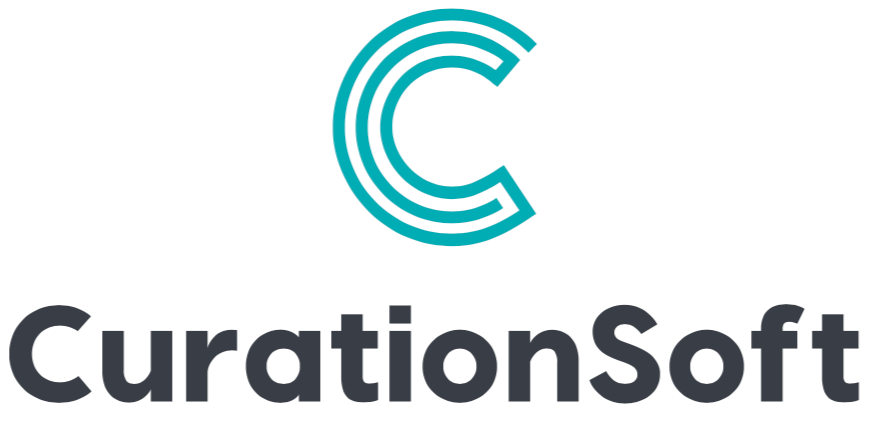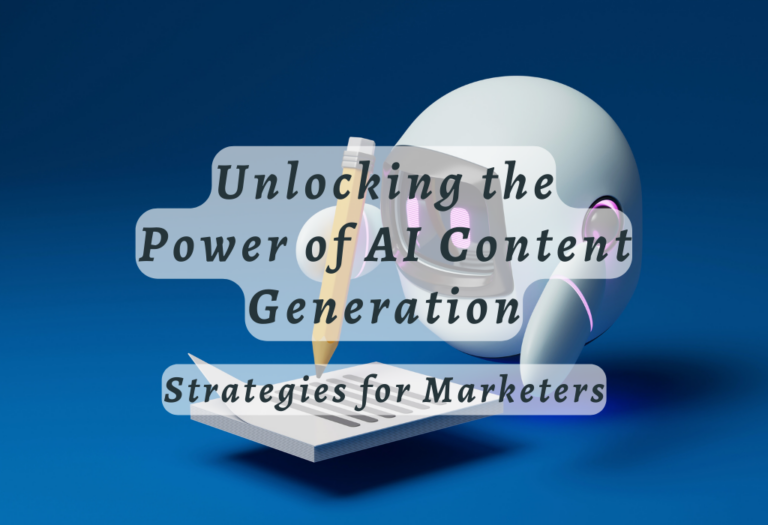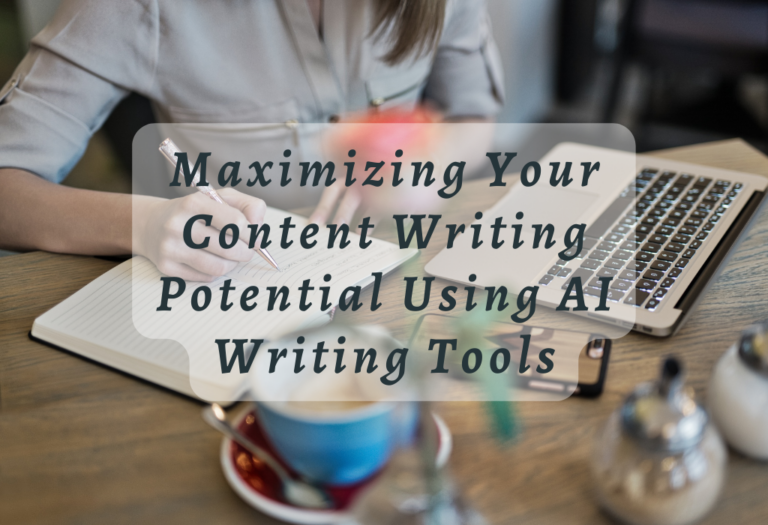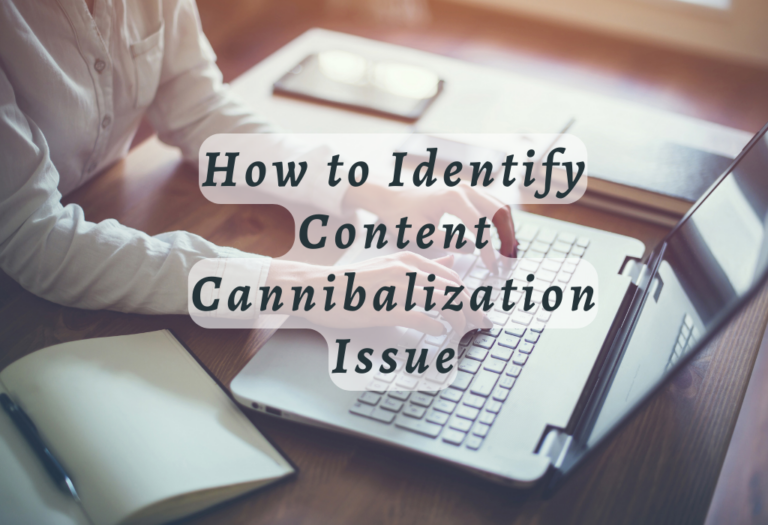AI Content Detection – An Expert Guide
In today’s digital age, content has become increasingly important to marketers. As technology evolves, so does how we create and consume content. It is leading us toward a new era of AI-generated content. With this development comes an increased need for efficient and effective ways to detect AI-created material. These robust software programs can help identify any generated or manipulated text produced by GPT3 or ChatGPT quickly and accurately.
In this article, we’ll explore why it is essential to detect AI Content and how Google handles such identification tasks. Here we have also covered you with the best available detectors on the market and their limitations – all helping you make better decisions when using automated generation methods for your marketing efforts!
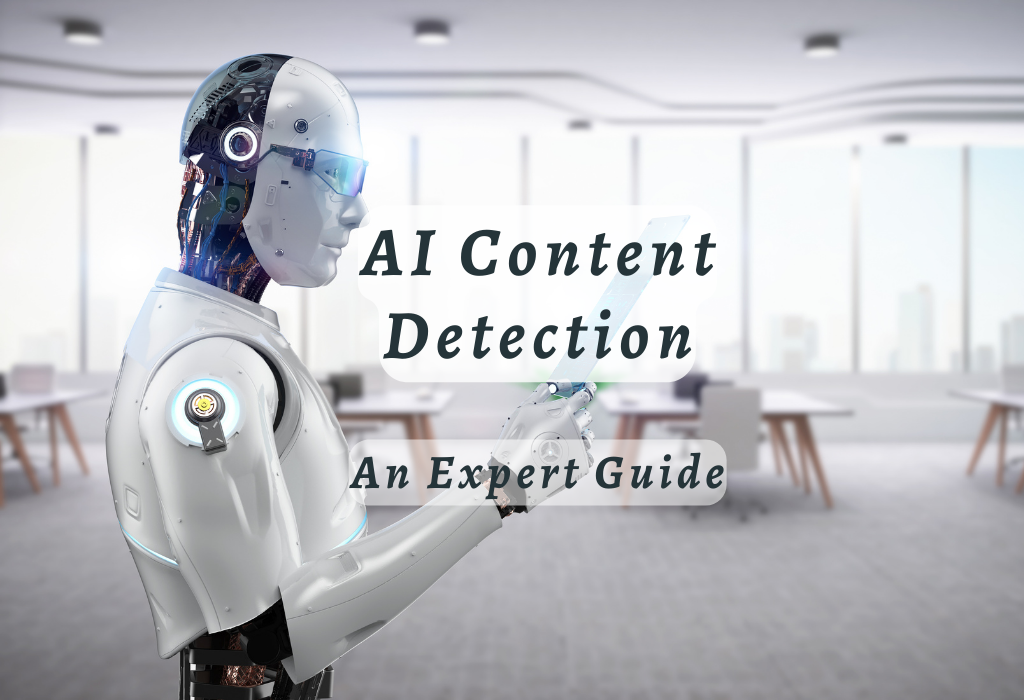
What is AI Content Detection?
AI content detection is identifying and analyzing content created by artificial intelligence (AI) algorithms. It helps to identify any potential issues with the content generated by AI, such as plagiarism or copyright infringement. AI-generated content is found in various forms, including text, audio, video, and images.
AI content detection aims to ensure that all published material is original and not copied from another source without permission. It is essential for businesses that rely on their online presence for marketing purposes. Content generated using AI must meet specific standards to be considered acceptable for publication.
What are some methods to detect AI content?
There are a plethora of methods to detect AI content. Here is a quick breakdown of a few:
1. Natural Language Processing
One way to detect if an article has been written using an AI algorithm is through natural language processing (NLP). NLP uses machine learning techniques to analyze a text’s structure and syntax to determine its origin. For example, it can detect if someone wrote a sentence or if it was generated using an algorithm like GPT3 or ChatGPT, both popularly used tools for creating automated conversations between humans and machines.
2. Using Copyscape or Turnitin
Another method for detecting AI-generated content involves checking against existing databases containing known sources of plagiarized material, such as Turnitin or Copyscape, which are widely used among academic institutions and publishers alike. These services allow users to compare their work against previously published works to check for similarities that could indicate plagiarism or copyright infringement.
3. Using Content Detecting Software
Some companies have developed specialized software explicitly for detecting artificial intelligence-generated texts called “content detectors.” These systems use advanced algorithms based on deep learning technology combined with natural language processing techniques to accurately identify whether an AI system has produced a piece of writing. The accuracy rate these systems achieve varies depending on the data being analyzed, but they generally provide reliable results compared to other methods mentioned above.
Key Takeaway: AI content detection helps identify potential issues with AI-generated content, such as plagiarism or copyright infringement. It is done through NLP, existing databases and specialized software using machine learning and deep learning technology.
Why is it necessary to detect AI Content?
Detecting AI content is essential to ensuring the quality and accuracy of any content produced by an AI algorithm. By detecting AI-generated content, businesses can avoid legal issues from using such material without proper authorization. Additionally, it helps to ensure that the content meets specific standards regarding accuracy and relevance.
1. Getting rid of Copywriting Claims
One example of why it’s essential to detect AI-generated content is when a business wants to use a particular text or image for marketing purposes. If an AI algorithm generates the source material, copyright issues could arise if the original creator or owner has not granted permission. Detecting this type of material before using it can help protect businesses from potential legal action taken against them for copyright infringement.
2. Creating a Relevant Content
Another reason why detecting AI-generated content is so important is that it ensures that any information used in marketing campaigns is accurate and relevant to its intended audience. For instance, if a company wanted to create an advertisement about a new product launch but used text generated by an AI algorithm instead, chances are high that some key details would need to be corrected or relevant. It could lead to confusion among customers or even damage their reputation as reliable sources of information on products they offer. Therefore, detecting AI content can help ensure the accuracy and relevance of any material used for marketing purposes.
3. Maintaining the Authenticity of Content
It is essential to detect AI content to ensure that it is authentic and high-quality. With this knowledge, we can now explore how Google sees AI content.
Key Takeaway: Detecting AI content is essential for businesses to protect themselves from legal issues and ensure the accuracy of their marketing campaigns. It includes checking for copyright infringement, accuracy, and relevance of material used.
How Can Google Detect Ai Content?
Google has a variety of ways to detect AI content. Here is the detail of a few approaches Google to see the content:
1. Writing Patterns
The most common is by looking for patterns in writing. Computers cannot create original content, so they mash together existing information from the internet and create something that looks like an article but needs more real depth and insight. It makes it easy for Google to spot these articles as artificial and rank them lower than human-written ones.
2. Inconsistency in article flow
Another way Google can detect AI content is by looking at how well it reads and flows naturally. Artificial intelligence still needs to replicate the subtle nuances of natural language, which means its writing will often sound robotic or unnatural compared to human-written pieces. If a part doesn’t read smoothly, then it was written by an AI program rather than a person.
3. Detecting Lack of Creativity
Google can also look at an article’s complexity level when determining if an AI wrote it. Machines lack creativity and imagination, so their output tends to be pretty basic with no surprises or unexpected turns of phrase – something humans excel at when crafting engaging stories or informative articles about complex topics.
Overall, while machine learning has come a long way since its inception, there are still some key differences between artificial intelligence-generated content and that created by humans that make them easily distinguishable from one another. It is making it easier for search engines like Google to identify which is which quickly and accurately.
What to do to lower the Chances of AI detection?
Regarding content marketing and SEO, there are steps you can take to lower the chances that Google will detect your AI-generated content.
Key Takeaways: Google can detect AI content due to lack of creativity, plagiarism, change in writing patterns and inconsistent flow. But one can improve the AI content by editing it humanely.
Is Ai-Generated Content Worth the Risk?
AI-generated content is becoming increasingly popular as a way to save time and money when it comes to marketing. But is it worth the risk?
For starters, AI-generated content can be highly qualified if you have the right tools and team. Range at scale offers an AI writer that produces human-like content with their “humanity score” tool. It allows marketers to understand how close the generated content resembles natural writing.
However, no matter how good your AI writer may be, it’s essential to always have a human look over everything before posting on your site or blog. It needs to be more for the text to sound like something written by a person; other elements, such as grammar and punctuation, need attention too.
Best Ai Content Detectors
AI content detectors are becoming increasingly popular amongst marketers and SEOs alike. With the ability to quickly and easily detect AI-generated content, these tools can save time and money when monitoring existing or new content.
1. Writer.com
Writer.com is one of the most accurate AI detection tools, allowing users to copy and paste their content into the tool for analysis. While bulk URLs cannot get submitted here, their detection software is still very reliable and easy to use.
2. On-Page.ai’s Content Optimisation Tool
Another excellent option for detecting AI-written articles is On-Page.ai’s Content Optimisation Tool which allows users to load multiple URLs to analyze uniqueness levels within an article or blog post. However, as with any AI detector tool, false positives may occur – particularly with more informative pieces where there are only so many variations on how they can be written up.
3. Content AT scale
Content At scale is another tool used to detect AI content written with GPT3 or ChatGPT. This platform utilizes advanced statistical methods and deep learning techniques to identify any potential automated text generation within writing samples accurately. Additionally, Content At Scale provides users with a range of metrics such as sentiment analysis, grammar checks, plagiarism detection and more – making it an ideal choice for those looking for reliable results when attempting to spot suspiciously human-like pieces online.
4. Hugging Face
Hugging Face also provides an excellent service in detecting artificial intelligence-generated articles. It returns accurate data from its site through a “copy & paste” system that requires no URL submission but still does an excellent job identifying AI-generated material.
Key Takeaways: Overall, these options include Writer. Com, On Page, Content at Scale, and Hugging Face provide some of the best solutions to accurately detect artificially created content – saving you time and effort while ensuring accuracy in your results.
How Can We Detect AI Content as Written using GPT3 or ChatGPT ?
Detecting AI content written with GPT3 or ChatGPT can be tricky for marketers. Fortunately, there are several tools available to help see if an artificial intelligence algorithm generated the text.
1. Originality.ai
Originality.ai is a powerful tool that supports detecting ChatGPT written content, plagiarism, and other forms of copycatting. It also offers a Chrome extension to quickly check for AI-written content on Google docs, WordPress, Email, or any other website. You can use this tool for free for the first few checks and then buy credits which cost about $0.01 per 100 words checked after that.
2. Giant Language Model Test Room (GLTR)
It was developed by MIT-IBM Watson AI lab and Harvard NLP. GLTR is a free AI-written content detection tool that works best with GPT-2 language models from OpenAI 117M model library. When you input your text into GLTR, it scans it entirely and gives results in colour codes; green indicates that no editing gets done. While yellow means there were edits made but still retains some original features from an automated source like GPT-2. To learn more about how this works, visit their website here.
Key Takeaways: By understanding the features and limitations of GPT3 and ChatGPT, we can detect AI content more effectively and efficiently using AI 2. Giant Language Model Test Room (GLTR.)
Limitations of AI Detection Tools
AI detection tools are effective at detecting artificial intelligence-generated content, but they have some limitations that are considered.
Although AI detection tools have come a long way in helping marketers optimize content, there are still limitations. The following section will discuss the overall conclusion and implications of using these tools.
Key Takeaway: AI detection tools can detect AI-generated content, but they have limitations such as not seeing all types of plagiarism or copyright infringement, difficulty differentiating between human and machine-written content, and keyword matching leading to false positives.
Advantages of Ai Written Content
Here are some advantages of AI written content:
1. Foolproof Content
AI-written content is more accurate and reliable than human-written content. Artificial intelligence algorithms are designed to identify errors in grammar, spelling, punctuation, syntax and other aspects of writing that humans may miss or overlook. It makes it easier for marketers to create content that is free from mistakes and looks professional.
2. Quick Content Creation
AI-written content can be generated quickly and efficiently compared to human-written content, which takes a lot of time and effort to produce quality results. With the help of AI tools, marketers can generate large amounts of high-quality SEO-optimized articles in just a few minutes with minimal effort required on their part.
3. Cost Effective
AI-written content is also cost-effective since it eliminates the need for hiring expensive writers or editors who would otherwise get needed to create similar quality pieces manually. By using automated tools such as natural language processing (NLP) systems, marketers can save money while still producing excellent results with their digital marketing campaigns without compromising on quality standards set by search engines like Google or Bing etc.
4. Personalization
AI also allows marketers to personalize their messages better since they can tailor the directive to specific audiences. They do this based on demographics such as age group, gender, interests or even location data collected from social media platforms like Facebook & Twitter. It helps them target potential customers more effectively, thus increasing conversion rates significantly over traditional methods before this technology was available at our disposal today.
5. More Optimization
Last but not least important; when combined with other technologies such as machine learning (ML), artificial intelligence (AI) can become an invaluable asset for any marketer looking into optimizing their digital marketing campaigns further down the line. ML algorithms can learn from past experiences & data points gathered through various sources, enabling them to make predictions about future trends & patterns in customer behaviour – something no human could ever do alone.
Disadvantages of Ai Written Content
AI-written content can be a great way to generate content quickly, but it’s essential to consider the potential drawbacks before relying on it.
1. Lack of Creativity
AI-generated content may need creativity and originality to capture human language’s nuances. It is also likely to contain errors that require manual editing or proofreading. Furthermore, AI-generated content often lacks context and fails to provide any meaningful insights into a topic.
2. Plagiarized Content
Using AI for writing could lead to plagiarism issues if not properly monitored. Automated tools can result in duplicate versions of articles which could lead to penalties from search engines such as Google for violating their guidelines against the same content.
3. Limited interpreting ability
Another area for improvement with using AI for writing is that it only sometimes understands the meaning behind words and phrases used in a particular context or industry sector. It can make its output difficult for readers familiar with specific terminology or jargon related to their expertise. Additionally, when attempting more complex tasks such as summarizing long documents or generating reports based on data sets, AI-generated results may need to be more accurate due to their inability accurately interpret large amounts of information at once.
4. Privacy Concerns
Finally, there are privacy concerns associated with using artificial intelligence technology. Many companies have access to user data which they then use for training algorithms and creating models that produce personalized outputs tailored to an individual’s preferences. It raises ethical questions about how much control we should give machines over our lives and whether these decisions should be left solely to humans.
Key Takeaways: Overall, while some advantages are associated with utilizing artificial intelligence technology in quickly producing large volumes of text-based material, marketers must carefully know the disadvantages, such as plagiarized content, lack of creativity and privacy concerns.
FAQs concerning Ai Content Detection
Conclusion
In conclusion, AI content detection is essential for marketers to ensure that their content is original and not plagiarized. It can help them avoid penalties from search engines like Google and protect their brand reputation. AI Content Detection tools such as On-Page.ai, Writer.com, GLTR, Content At Scale and Originality.ai are some of today’s best options for detecting AI content written with GPT3 or ChatGPT technology. However, it’s essential to keep in mind that these tools have certain limitations that are considered before deciding to use them for your business needs. Ultimately, an AI content detection tool can help you create high-quality content that will benefit your customers and your bottom line!
Are you looking for an AI-powered content detection solution to help optimize your content marketing and SEO?
CurationSoft is a perfect choice! Our advanced technology will quickly identify relevant keywords, ensure data accuracy, and provide real-time insights into user behaviour. We guarantee that our software will maximize organic search traffic and increase conversions. Get started today with Curation Soft – the only AI Content Detection Solution on the market!
